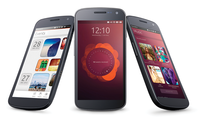Mobile Apps
Canonical offers a tutorial showing how you can develop "Ubuntu for phone" apps even today. We'll summarize the important points.
|

©Canonical
Canonical offers a tutorial showing how you can develop "Ubuntu for phone" apps even today. We'll summarize the important points.
Ubuntu looks ready to take on the world of smartphones. Canonical successfully scored lots of media attention when the company announced plans for the smartphone based on Ubuntu. Not so successful was our test of downloading and installing the operating system on a smartphone; however, Canonical is expected to provide the corresponding images in February 2013 (that is, by the time you read this article).
Developers nevertheless have some good news, in that the QML Toolkit can help you develop the first apps for "Ubuntu for phones." In this article, I'll describe how to set up the development environment, relying for the most part on instructions from app developer David Planella. At Canonical, Planella is responsible for the efforts surrounding the new Apps software category. He put together a website [1] encouraging aspiring app developers to use QML for Ubuntu (see the "What Is QML?" box).
I'll show how you can set up a development environment with Qt Creator. I won't go into the code itself, because some good online resources are available that I'll present later in the article. The prerequisite is that you use Ubuntu 12.10, because the components are intended for the Quantal Quetzal release. The Quantal packages can, with a bit of an adjustment, also be installed on Ubuntu 12.04; however, I wasn't able to test that option [2].
[...]
Pages: 2
The QML Toolkit lets you create apps for the new Ubuntu smartphone system. We'll help you get started with setting up the QML development environment.
With the upcoming version 9.10 the Ubuntu One DropBox clone will be integrated automatically into Ubuntu's GNOME desktop. Paying customers will get a significant storage capacity upgrade.
At this year's Consumer Electronics Show, Canonical showed Ubuntu on a smartphone for the first time. Does this concept have a future?
Jono talks about the newest member of the Ubuntu family.
© 2025 Linux New Media USA, LLC – Legal Notice